
You need to book a little ahead to peer through the five powerful telescopes on a dark night event at Gin Gin, an hour north of Perth.
You can take a cloud check in the morning if it looks to be really overcast but most of the time the Gin Gin astronomers will give the heavens a go. That means giving you an experience that leaves you feeling awed by the universe and just a little worried about that day our world is going to die.
If you are a traveller and a bit dubious about booking ahead for the monthly dark night date (when the moon is not around to stuff things up with its light), take heart from the sad tale of Guillaume Le Gentil. You will never be as unlucky as he was when commissioned in 1760 by the French Academy of Sciences to go to Pondicherry in India to observe the transit of Venus across the Sun.
Poor Guillaume was delayed a year in Mauritius because France and Britain had declared war. In February 1761 he set off for India again, still sure he could make Pondicherry in time for the June 6 transit. A monsoon blew him off course for five weeks then the ship’s captain heard Pondicherry had been captured by the British. He sailed back to Mauritius with his frustrated passenger.
Disappointed Guillaume had to make inaccurate observations of the Venus transit from an imperfect position on a heaving deck. Rather than return to France, he decided to hang about in the Indian Ocean for eight years until the next transit. He did a heap of observations on the skies, seas and natural history then figured out the best place in the world to observe the transit would be the Philippines.
He sailed to Manila. The governor gave him a hard time. Word came that Pondicherry was back in French hands so Guillaume escaped and arrived in the Indian town a good year ahead of the transit. He diligently studied and prepared. The night before Venus did her thing on June 4 the skies were crystal clear but before dawn clouds crept over the skies.
They thickened up nicely to totally obscure the planet’s transit of the Sun the next morning. A couple of hours later the skies cleared again. Le Gentil got the shits, mentally and physically, made worse by news that Manila’s skies had been perfectly clear for Venus to slide across the Sun.
Still sick from despair and dysentery, Guillaume started to make his weary way home nine months later. He was so weak he had to recuperate again at Mauritius; he took months to get passage on another ship; it was damaged by a hurricane and had to turn back to Mauritius. The journey took a year until at last, after a stormy voyage, the star-crossed astronomer staggered back to Paris 11 years, six months and 13 days after leaving.
He had been presumed dead. His heirs were fighting over his estate. The academy had scrubbed his name from its board. Money entrusted to his agent was missing. So were eight crates of specimens. So was his wife: she had married someone else.
That story is just to make you feel better if you do strike a rare cloudy dark night, or if you need that cloud check option. Regardless, the Gin Gin experience of the observatory in the scrub and the Gravity Centre next door is memorable.
The Gravity Centre with the 45m Leaning Tower of Gin Gin is an interactive playroom full of thought-provoking, funny, bewildering and terrifying tales of our world and far, far beyond it. Driven home is the realisation that the more we know the more we realise how little we know. The Leaning Tower defies gravity and challenges lurking vestiges of vertigo. You fill up balloons and cart them up, hanging out in space (pictured) to drop them and watch them land at the same time, just as Galileo did at Pisa.
We digested as much gravity information as we could over a picnic tea as we waited for the star gazing team to arrive at the observatory next door. Before we peered through the telescopes on our perfect starry night, feeling a little guilty about Guillaume, we learned stars we were looking at probably weren’t there because things happen (like they explode or collapse) in the 5000 light years or so it takes their image to reach Earth.
A lecture preceding the peering included disconcerting video footage. Beautiful Venus is ugly, seething with molten, poisonous rivers and toxic volcanoes. I now look more suspiciously at our evening star.
My favourite saucepan constellation is also seen now in a new light. The bottom of it is actually Orion’s belt and a scope was trained on one of the three bright stars, the Horsehead Nebula, a swirling pinkish cloud 1500 light years away.
Randy Orion is chasing the Seven Sisters across the skies, according to the ancient astrologers who decided on the images represented by the stars. One’s imagination must be extended a few light years to pick out what the constellations are supposed to depict.. Apparently they were proclaimed by bored mead-sodden shepherds lying on the backs at night:
“Hey Trogga, what do you reckon those stars look like?”
“Oh man, that’s gotta be a fish.”
We learned that space is all curves and waves. We are not sure what was here before the big bang but the universe is expanding faster and faster. Stars are disappearing and getting further apart, so enjoy their glitter while you can.
Not only will we have lots more black between the stars. We will also not be here because our Sun is going to start getting bigger, swallowing the close planets before exploding and collapsing. Earth has a pretty fragile existence anyway, so before that it could get a wee wobble up, get seriously hot or cold if the Sun fluctuates, or get hit by a comet now shooting towards us.
And if you think we are special, take a look at this. https://www.youtube.com/embed/XE0aAZE0kp4?feature=player_embedded
Gin Gin’s Gravity Centre and Observatory are well worth a day and a night. Guillaume would have loved the place. It really makes you appreciate every damned day and starry night.
You can take a cloud check in the morning if it looks to be really overcast but most of the time the Gin Gin astronomers will give the heavens a go. That means giving you an experience that leaves you feeling awed by the universe and just a little worried about that day our world is going to die.
If you are a traveller and a bit dubious about booking ahead for the monthly dark night date (when the moon is not around to stuff things up with its light), take heart from the sad tale of Guillaume Le Gentil. You will never be as unlucky as he was when commissioned in 1760 by the French Academy of Sciences to go to Pondicherry in India to observe the transit of Venus across the Sun.
Poor Guillaume was delayed a year in Mauritius because France and Britain had declared war. In February 1761 he set off for India again, still sure he could make Pondicherry in time for the June 6 transit. A monsoon blew him off course for five weeks then the ship’s captain heard Pondicherry had been captured by the British. He sailed back to Mauritius with his frustrated passenger.
Disappointed Guillaume had to make inaccurate observations of the Venus transit from an imperfect position on a heaving deck. Rather than return to France, he decided to hang about in the Indian Ocean for eight years until the next transit. He did a heap of observations on the skies, seas and natural history then figured out the best place in the world to observe the transit would be the Philippines.
He sailed to Manila. The governor gave him a hard time. Word came that Pondicherry was back in French hands so Guillaume escaped and arrived in the Indian town a good year ahead of the transit. He diligently studied and prepared. The night before Venus did her thing on June 4 the skies were crystal clear but before dawn clouds crept over the skies.
They thickened up nicely to totally obscure the planet’s transit of the Sun the next morning. A couple of hours later the skies cleared again. Le Gentil got the shits, mentally and physically, made worse by news that Manila’s skies had been perfectly clear for Venus to slide across the Sun.
Still sick from despair and dysentery, Guillaume started to make his weary way home nine months later. He was so weak he had to recuperate again at Mauritius; he took months to get passage on another ship; it was damaged by a hurricane and had to turn back to Mauritius. The journey took a year until at last, after a stormy voyage, the star-crossed astronomer staggered back to Paris 11 years, six months and 13 days after leaving.
He had been presumed dead. His heirs were fighting over his estate. The academy had scrubbed his name from its board. Money entrusted to his agent was missing. So were eight crates of specimens. So was his wife: she had married someone else.
That story is just to make you feel better if you do strike a rare cloudy dark night, or if you need that cloud check option. Regardless, the Gin Gin experience of the observatory in the scrub and the Gravity Centre next door is memorable.
The Gravity Centre with the 45m Leaning Tower of Gin Gin is an interactive playroom full of thought-provoking, funny, bewildering and terrifying tales of our world and far, far beyond it. Driven home is the realisation that the more we know the more we realise how little we know. The Leaning Tower defies gravity and challenges lurking vestiges of vertigo. You fill up balloons and cart them up, hanging out in space (pictured) to drop them and watch them land at the same time, just as Galileo did at Pisa.
We digested as much gravity information as we could over a picnic tea as we waited for the star gazing team to arrive at the observatory next door. Before we peered through the telescopes on our perfect starry night, feeling a little guilty about Guillaume, we learned stars we were looking at probably weren’t there because things happen (like they explode or collapse) in the 5000 light years or so it takes their image to reach Earth.
A lecture preceding the peering included disconcerting video footage. Beautiful Venus is ugly, seething with molten, poisonous rivers and toxic volcanoes. I now look more suspiciously at our evening star.
My favourite saucepan constellation is also seen now in a new light. The bottom of it is actually Orion’s belt and a scope was trained on one of the three bright stars, the Horsehead Nebula, a swirling pinkish cloud 1500 light years away.
Randy Orion is chasing the Seven Sisters across the skies, according to the ancient astrologers who decided on the images represented by the stars. One’s imagination must be extended a few light years to pick out what the constellations are supposed to depict.. Apparently they were proclaimed by bored mead-sodden shepherds lying on the backs at night:
“Hey Trogga, what do you reckon those stars look like?”
“Oh man, that’s gotta be a fish.”
We learned that space is all curves and waves. We are not sure what was here before the big bang but the universe is expanding faster and faster. Stars are disappearing and getting further apart, so enjoy their glitter while you can.
Not only will we have lots more black between the stars. We will also not be here because our Sun is going to start getting bigger, swallowing the close planets before exploding and collapsing. Earth has a pretty fragile existence anyway, so before that it could get a wee wobble up, get seriously hot or cold if the Sun fluctuates, or get hit by a comet now shooting towards us.
And if you think we are special, take a look at this. https://www.youtube.com/embed/XE0aAZE0kp4?feature=player_embedded
Gin Gin’s Gravity Centre and Observatory are well worth a day and a night. Guillaume would have loved the place. It really makes you appreciate every damned day and starry night.

Isabel parked outside the astronomy centre at Gin Gin. The curved roof on the building at top right rolls back to become the observation deck for the monthly dark nights. The buildings in the foreground are part of the Gravity Centre. The photo was taken from the top of the Leaning Tower of Gin Gin.








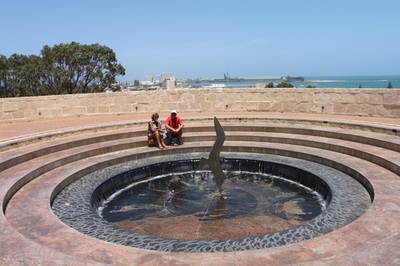
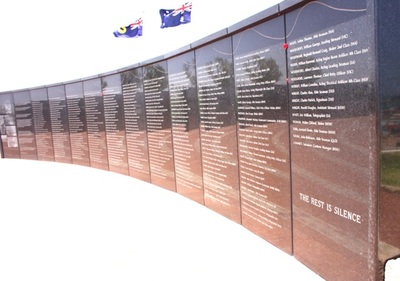

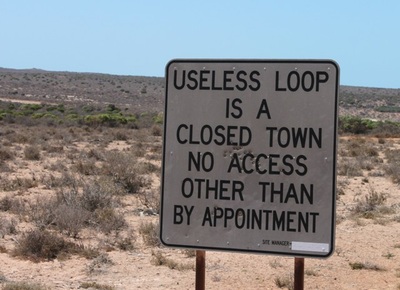

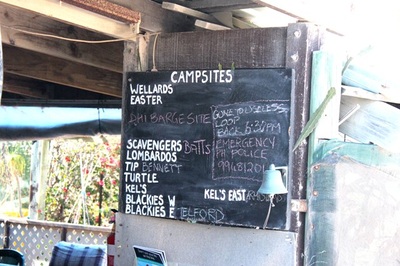

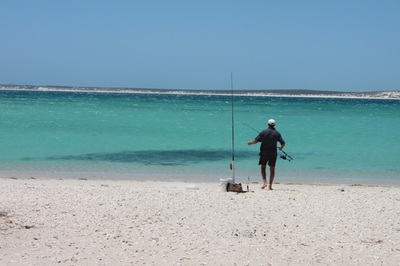


 RSS Feed
RSS Feed
